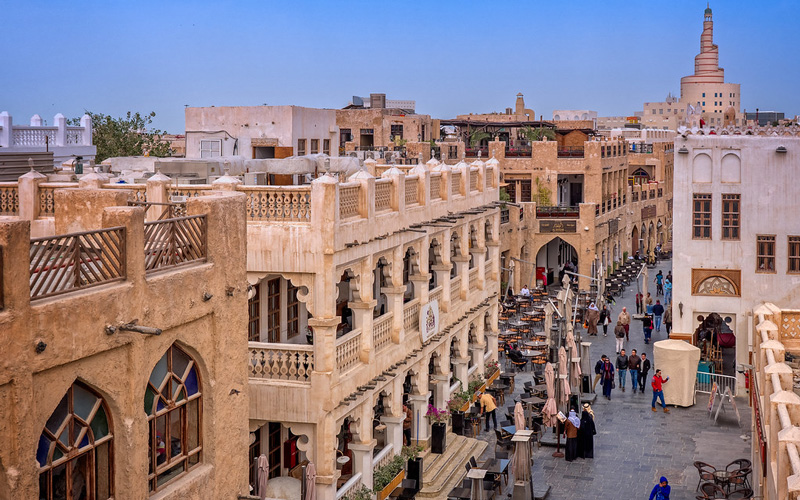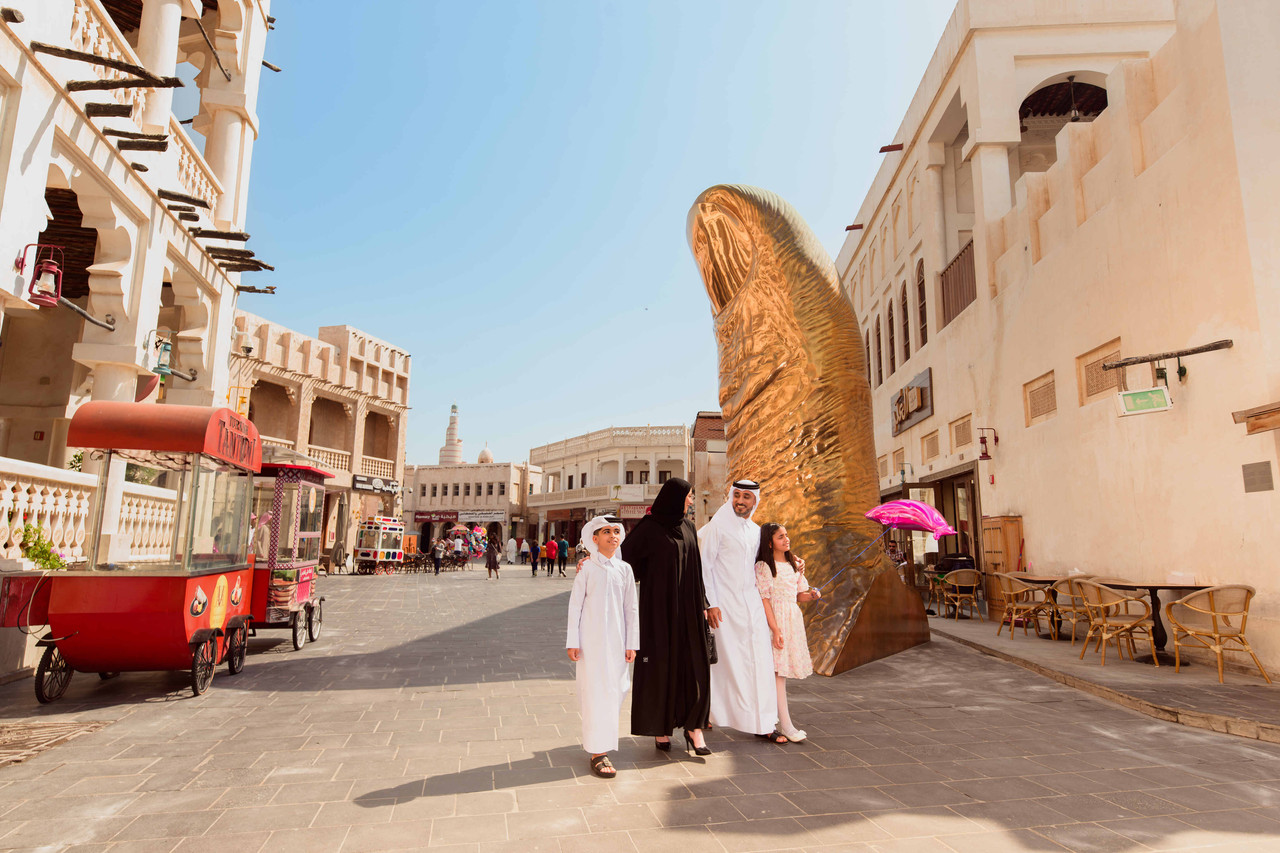Souq Waqif is a traditional market located in Doha, the capital of Qatar, based on traditional Qatari architecture. Its name, meaning "standing market," originates from the past practice of people conducting trade while standing. It is situated in the center of Doha, in an area near the dry riverbed called Wadi Msheireb.

Souq Waqif General View (Turna)
History
The history of Souq Waqif dates back to the early 20th century. In its initial periods, it functioned as a market selling spices, fabrics, live animals, and handmade products. As a meeting point for the local people and nomadic Bedouins, the market became one of Doha's first commercial centers. In the late 20th century, due to rapid modernization in the city, the proliferation of shopping malls, and the shift of the population to different areas, the market began to lose its function and its physical structure deteriorated.
Between 2004 and 2008, Souq Waqif was renovated through a restoration process initiated under the patronage of the Emir of Qatar, Sheikh Hamad bin Khalifa Al Thani, and Sheikha Moza bint Nasser. As part of the restoration, additions made after 1950 were removed, and original architectural elements were reconstructed using traditional building materials such as mud plaster and wooden beams. The project aimed to preserve the historical fabric.
Architectural Features
Souq Waqif features traditional architectural elements adapted to Qatar's climate. Elements like narrow streets, high walls, small windows, and open courtyards provide protection against hot climatic conditions and create a human-scaled urban layout. The interconnected design of the paths, allowing pedestrians to move comfortably, ensures the space is open to social interaction.
Function and Use
Souq Waqif is a multi-functional public space used for social and cultural purposes as well as its commercial function. The market features shops selling traditional handicrafts, clothing, spices, and souvenirs. Additionally, structures such as art galleries, cafes, restaurants, boutique hotels, and cultural event spaces are also part of the market. Various exhibitions, festivals, and concerts are held throughout the year.

Souq Waqif (Visit Qatar)
Urban Design and Sustainability
Souq Waqif serves as an example of an area designed in accordance with sustainable urban development principles. Its pedestrian-friendly nature, the inclusion of mixed-use areas, and the limitation of motorized vehicle traffic contribute to the creation of a human-centered urban fabric. In this regard, it aligns with the principles of New Urbanism.
Preservation of Cultural Heritage
The renovation of Souq Waqif is considered part of Qatar's policies to preserve its cultural identity. Within the framework of Qatar National Vision 2030, priority has been given to such restoration projects in line with the goal of integrating tradition with modernity. The preservation and repurposing of the market have both ensured historical continuity and strengthened the sense of urban belonging.


